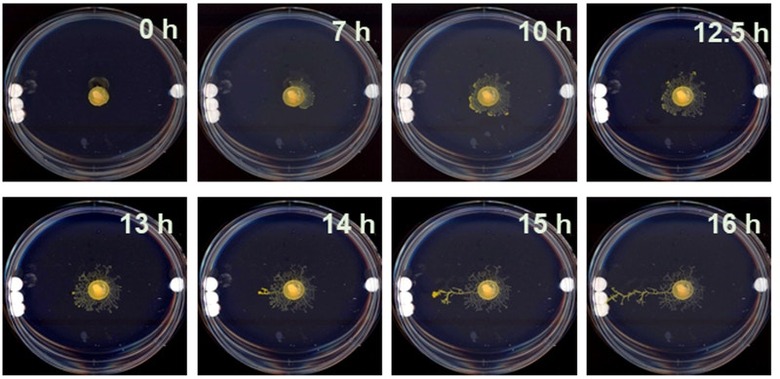Research Finds Slime Molds Use Physical Cues To Decide Where To Grow
Humans have the largest brains of any creature on the Earth, so we are always using our brains and thinking about solutions to problems. Scientists have wondered how organisms that lack a brain can determine how to grow and function. Researchers have performed new research on slime molds and determined they can use physical cues to decide where to grow despite the lack of a brain.
The specific mold used in the study is called Physarum polycephalum, and it uses its body to sense mechanical cues in the surrounding environment. It performs computations similar to what we might consider "thinking" to decide the direction to grow based on information gathered from mechanical cues. Researchers note that unlike past research into slime mold, this study uses results obtained without giving the organism food or chemical signals to influence its behavior.
Study first author Nirosha Murugan says scientists are becoming more interested in Physarum because while it lacks a brain, it can still perform behaviors associated with thinking. For instance, Physarum is able to solve mazes, learn new things, and predict events. Researchers want to determine how proto-intelligent life can do this type of computation as a method to gain insight into animal cognition and behavior, including our own.
Slime mold is an amoeba-like organism that can be up to several feet long and breaks down decomposing matter in the environment, including rotting logs, mulch, and dead leaves. The single Physarum consists of a membrane that contains many cellular nuclei floating within a shared cytoplasm that creates a structure called a syncytium.

It moves by shuttling the watery cytoplasm back and forth through the entire length of its body in regular waves, a process known as shuttle streaming. In the study, researchers placed Physarum specimens in the center of petri dishes coated with a semi-flexible agar gel and placed one to three glass discs each other atop gel on opposite sides of each dish.
The organism grew freely in the dark over 24 hours, and researchers tracked growth patterns. During the first 12 to 14 hours, Physarum grew outwards evenly in all directions, but after that, specimens extended a long branch that grew directly over the surface of the gel toward the three-disc region 70 percent of the time. This shows the Physarum chose to grow towards the area of greater mass without first physically exploring the area to confirm it contained a larger object. Scientists determined the creature made a calculated decision about where to grow based on relative patterns of strain detected in the environment.
